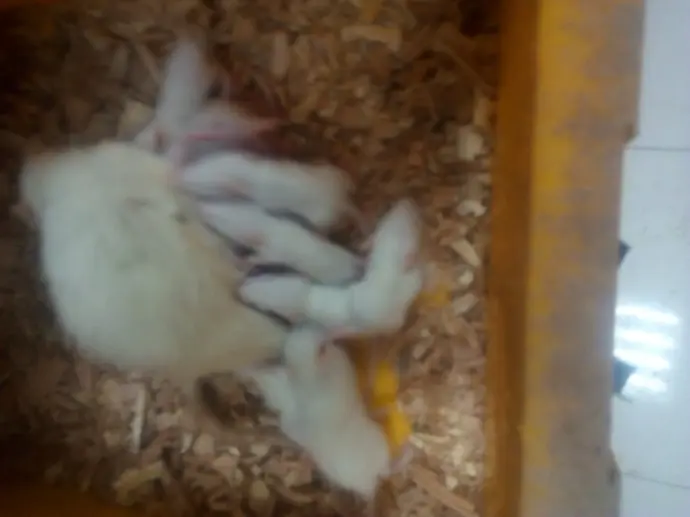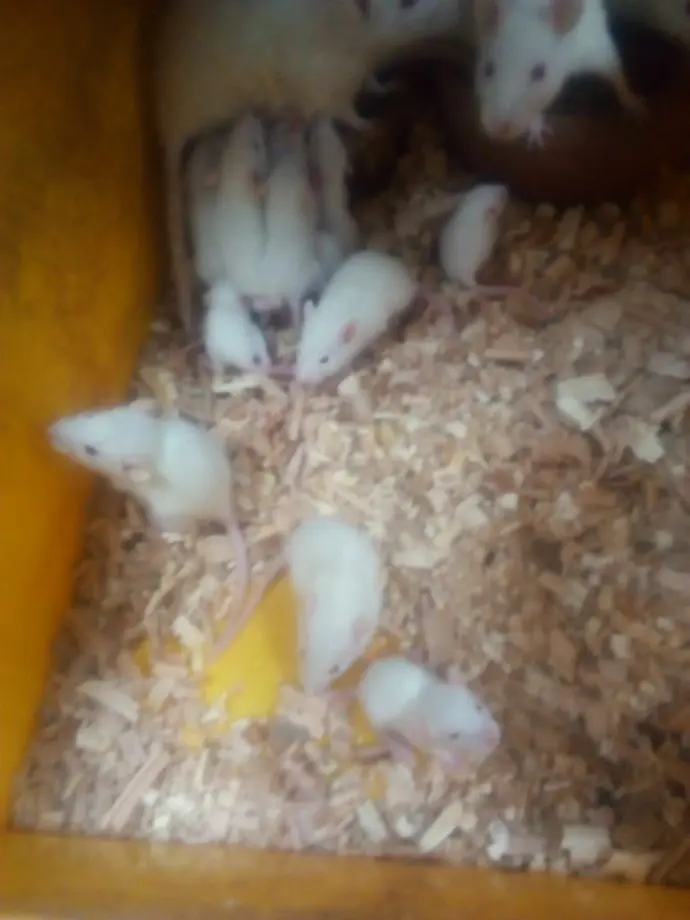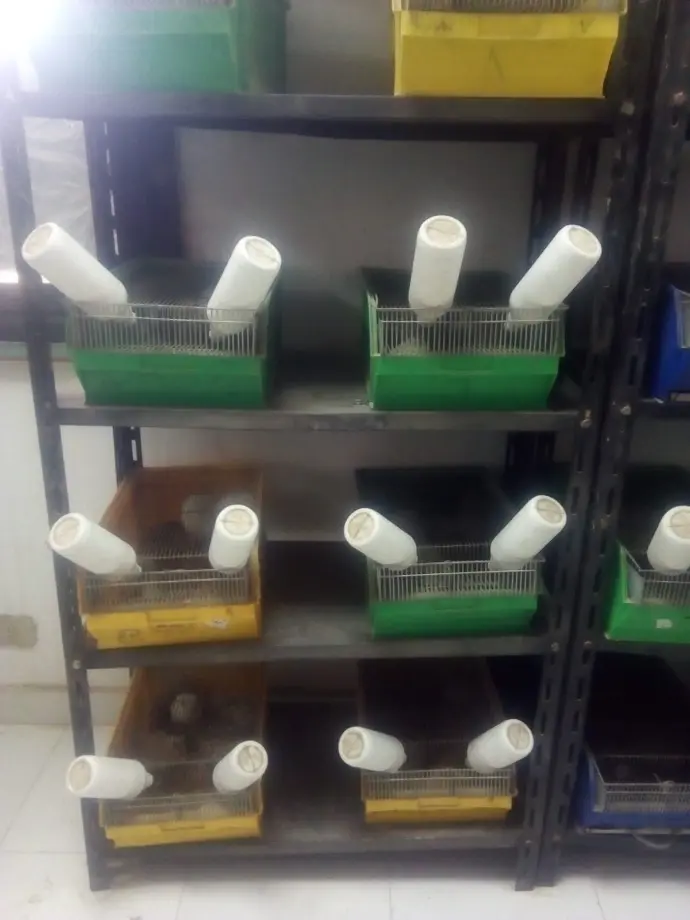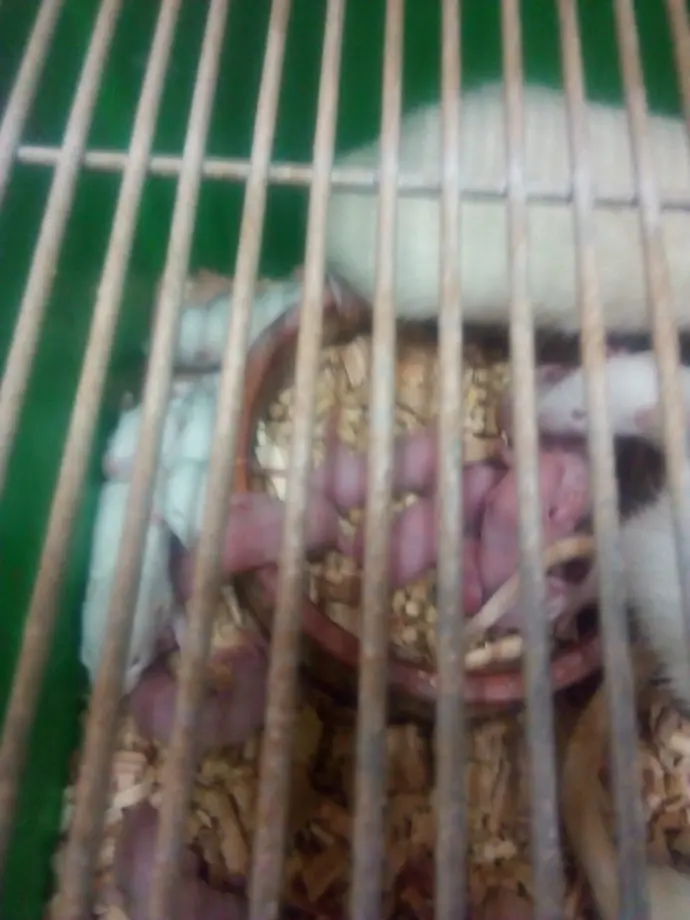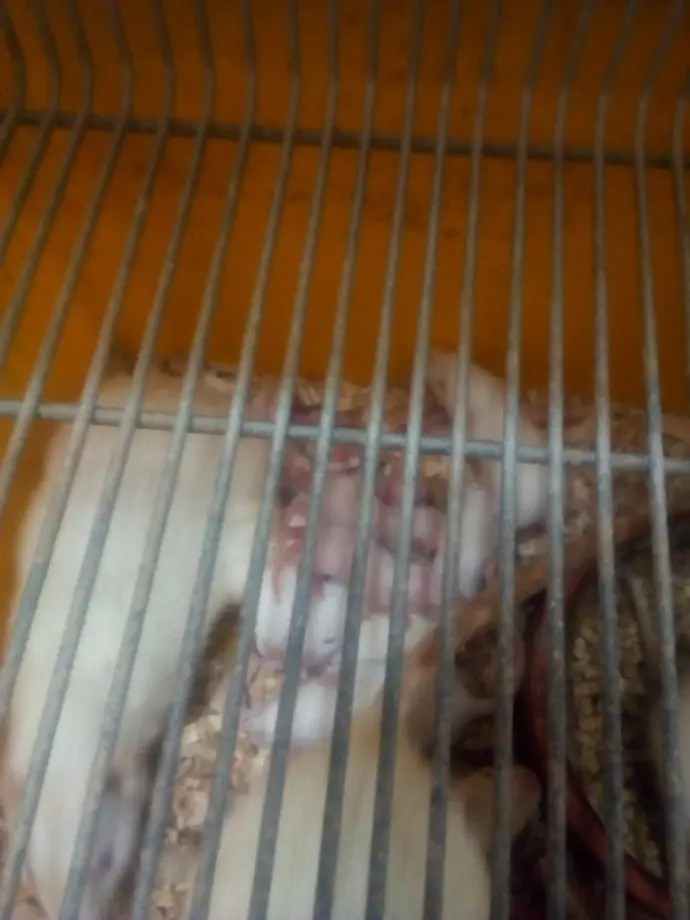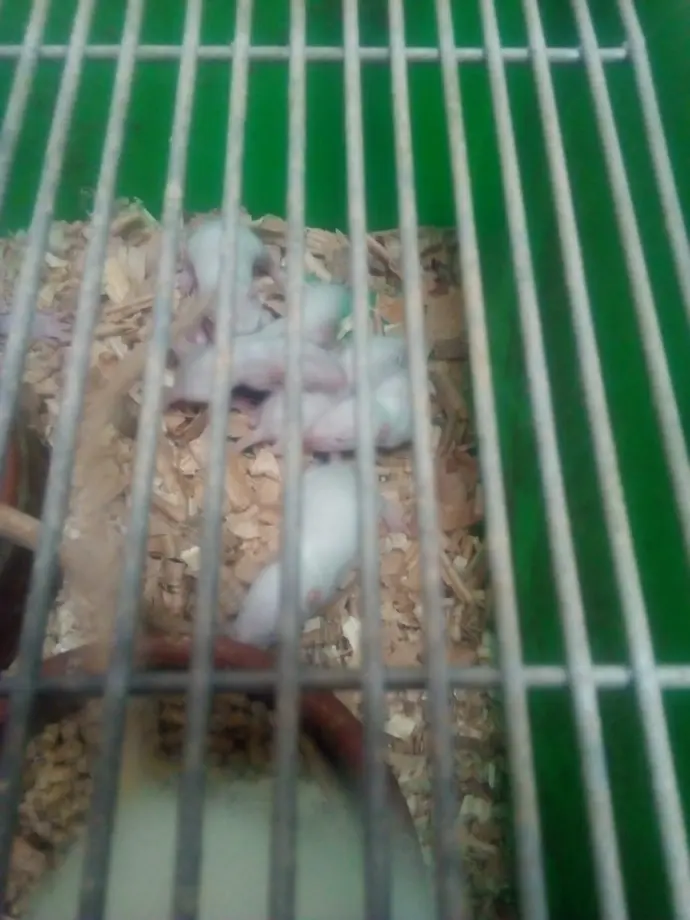The Animal House
The animal house in faculty of pharmacy, Ahram Canadian University is under the auspice of sustainable development and community services sector and is supervised by the Animal House Committee.
Animal House Committee:
1. Prof. Dr. Rania Hassan Fahmy. Professor. Vice dean for environmental development and community services
2. Dr. Ahmed EL-Dessouki – Assistant professor of pharmacology. Head of the committee, animal house supervisor
3. Mohamed El-Sherbiny – Teaching Assistant at pharmacology department. Member
4. Nada Tarek – Teaching Assistant at pharmacology department. Member
5. Ramadan Mahmoud– Lab Technician. Technician
6. Karim ElMarakbi – Account Manager at Ahram Canadian University Financial consultant
Description:
The animal house is a fully air-conditioned area located on the third floor (roof) of the pharmacy faculty building (building 2) on total area of 72 m2 and consists of three main rooms divided as follows:
1. Animal housing room: Consists of 13 metal stands with shelves and 114 animal cages (around 5-7 rat / cage).
2. Storage Room: Used for storing food materials and items required for animal housing.
3. Research Laboratory: For Experimental work on animals.
Animal Housing Standards:
1. Animals Space:
The animals should have the appropriate space and grouping standards according to the sex and body weight. Breeding animals requires more space, particularly if neonatal animals will be raised together with their mother or as a breeding group until weaning age.
2. Temperature:
Temperature is maintained with an air-conditioning system in order to keep the animals within normal circadian. Animals are housed within temperature ranges appropriate for the species, to which they can adapt with minimal stress and physiologic alteration.
3. Ventilation:
Air conditioning systems allow ventilation rates to be set in accordance with heat load and other variables. The animal house is well ventilated to provide appropriate air quality and stable environment for the housed animals. Specifically, ventilation provides an adequate oxygen supply and removes thermal loads caused by the animals.
4. Cleaning and Disinfection:
All components of the animal facility, including animal rooms and support spaces (e.g., storage room and research laboratory) should be regularly cleaned and disinfected as appropriate to the circumstances and at a frequency based on the use of the area and the nature of likely contamination.
5. Waste Disposal
There is a contract with "New-Valley company" and "Abdo Pasha Company", which are licensed commercial waste disposal firms. Such contracts ensure that waste disposal of biological and hazardous materials is performed regularly and safely.
Freezing storage is used to hold biological wastes until safely removed and disposed of. Waste containers with leak-proof tight-fitting lids are used for any liquid chemical hazards. Sharp wastes such as syringes and glass materials are disposed in special waste boxes to prevent injury to waste handlers.
Devices
1. Active conditioned avoidance apparatus
2. Open field test apparatuses
3. Y-Mazes
4. T-Mazes
5. Water Maze test
6. Four- plate test apparatus
Activities
· Providing animals required for practical experiments for pharmacology students.
· Achieved self-sufficiency in breeding experimental animals for scientific research.
· Selling experimental animals to faculty members, associate staff at the college, and also outside the college for scientific research.
· Providing a suitable laboratory space for the staff members, teaching assistants and postgraduate students to perform their experiments related to their research work masters and PhD studies in pharmacology and different fields.
